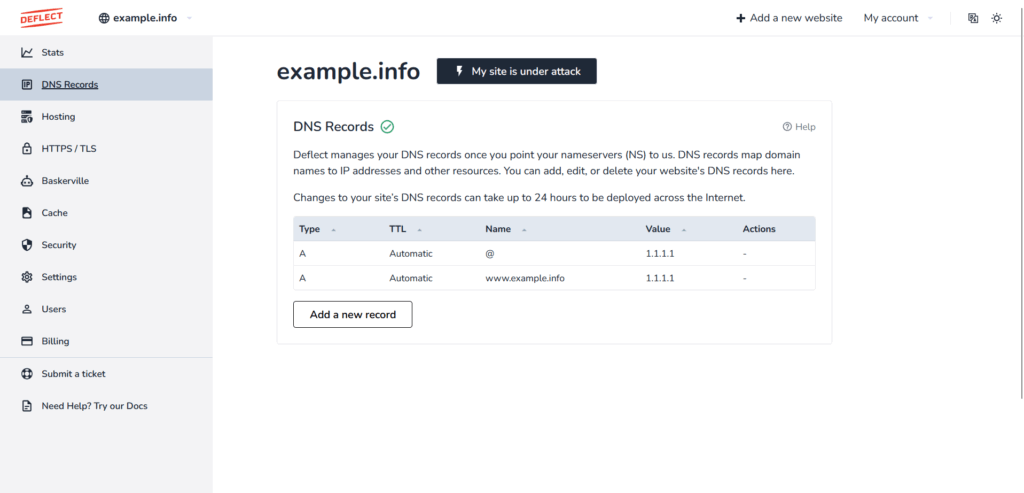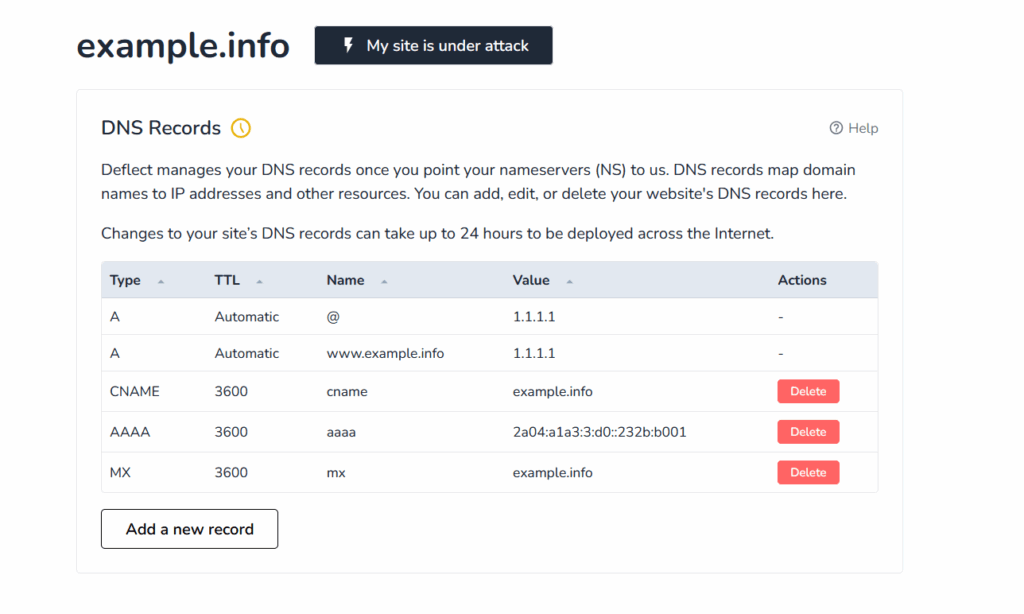When you register a website on Deflect, the Deflect system locates automatically your website’s DNS settings, and you can simply accept them or edit what needs to be changed by deleting or adding records.
If you need to change your DNS records when your site is already protected by Deflect, you can click on the DNS records tab in your Dashboard.
DNS Records Manager #

Every change you make to your DNS records goes through a validation process that checks if your changes are correct and your DNS records are reliable. If your changes are correct, they will be implemented automatically. As you will notice, the Dashboard will also inform you if your change is pending or has been implemented, to offer you as much control as possible over every operation.
Add new record #

Here is a short explanation on DNS records and their meaning:
- A record serves as the primary record for the domain, specifically representing the IP address you inputted in the preceding step. Alternatively, it could represent a subdomain record, like ftp.example.com.
- CNAME record typically serves as an alias for your domain, enabling user to access your site by via alias such as www.website.com.
- MX record is essential for email delivery, typically comprises multiple records with varying priority values. It is critical to maintain the integrity of this record to ensure uninterrupted email delivery.
- TXT record is an record that is appended to a domain. It is frequently used to verify domain ownership and establish a DMARC record for email delivery.
